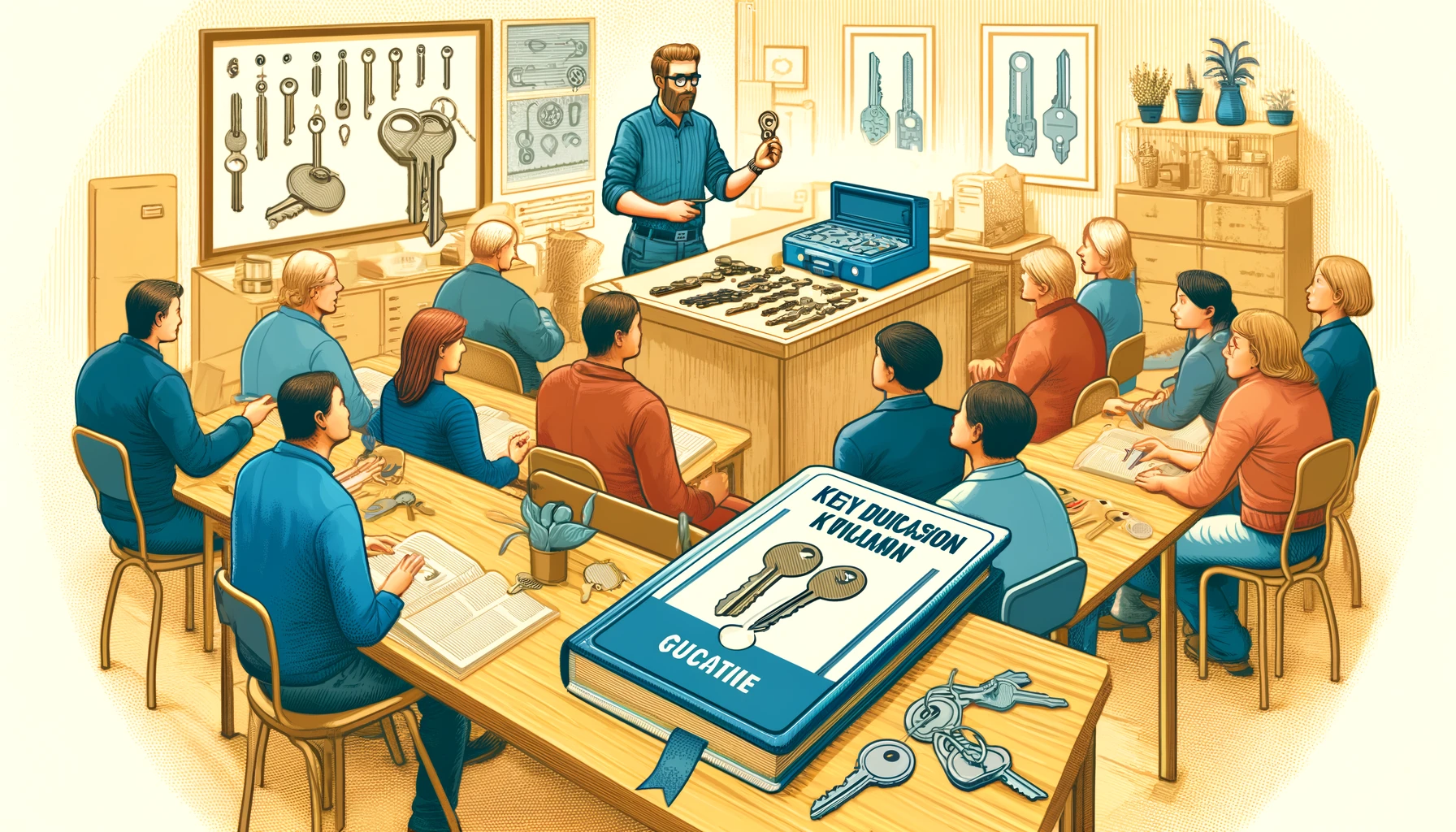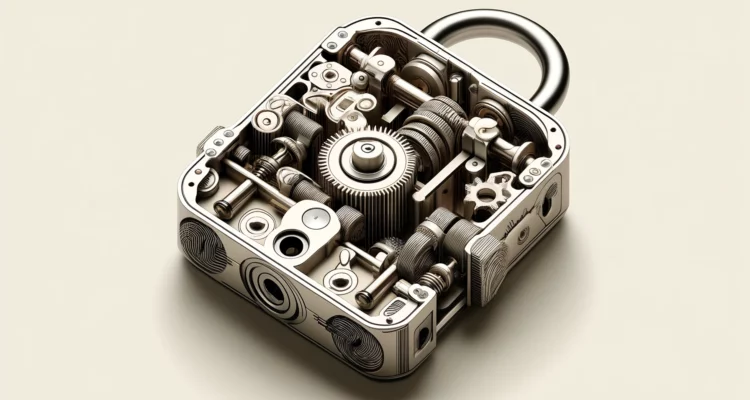The Locksmith’s Toolbox: Essential Tools Of The Trade

Embarking on a journey to enhance the safety of your home and the well-being of your loved ones can genuinely transform the essence of peace and security within your living space. “The Locksmith’s Toolbox: Essential Tools Of The Trade” unravels the layers of expertise and innovation that go into securing the sanctity of your home. From uncovering vulnerabilities during comprehensive security inspections to humanizing the protection process, this exploration delves into the heart of what it means to create a safe haven. Leveraging state-of-the-art technology and adopting a proactive stance towards potential threats, this narrative doesn’t just equip you with tools—it empowers you with knowledge. By understanding and implementing tailored solutions that align with your lifestyle, you’re not just securing doors and windows; you’re guaranteeing a fortress of serenity for yourself and your loved ones.
Lock Picks
Lock picking is an intricate skill that requires precision, patience, and the right tools. Whether you’re a professional locksmith or a hobbyist, understanding the various types of lock picks and their applications is crucial for success.
Tension Wrenches: Applying tension to locks
A tension wrench, or torque wrench, is one of the most fundamental tools in lock picking. It’s used to apply tension to the lock cylinder while manipulating the pins with a pick. The tension wrench holds the pins at the shear line, allowing you to turn the cylinder and open the lock once all pins are correctly set. Different locks require different amounts of tension, so having a variety of tension wrenches in your toolkit is essential.
Pick Guns: Mechanical and electric options
Pick guns, both mechanical and electric, offer a quick method to open a lock by rapidly snapping all the pins at the shear line simultaneously. Mechanical pick guns use a trigger mechanism to snap the pins, while electric pick guns provide a continuous vibrating motion. These tools are especially useful in situations where speed is of the essence, but they require practice to use effectively.
Rakes: Rapid movement to set pins
Rake picks are designed for rapid manipulation of the pin tumblers. The technique involves a fast, scrubbing movement that attempts to set all the pins at the shear line at once. Rakes come in various shapes, such as the snake, city, or Bogota rake, each with its own specific application depending on the lock’s configuration.
Hooks: Single pin picking
For more precise manipulation, hook picks are the go-to tool. They allow you to manipulate each pin individually, offering a higher level of control over the lock picking process. Single pin picking (SPP) is a technique favored by professionals for its precision, although it requires more skill and patience than using a rake.
Half-Diamond Picks: Versatile use for multiple lock types
The half-diamond pick is a versatile tool capable of both single pin picking and raking. Its shape allows it to maneuver easily inside the lock, making it suitable for a wide variety of pin tumbler locks. It’s an excellent addition to any lock picker’s toolkit, especially for beginners due to its adaptability.
Key Duplication Tools
Key duplication is a common task for locksmiths, requiring specialized tools to replicate keys accurately.
Key Duplicating Machine: For standard and high-security keys
A key duplicating machine is essential for creating copies of metal keys. High-quality machines can duplicate both standard and high-security keys with precision, ensuring the new key operates smoothly in the lock. Regular maintenance and calibration of the machine are important for optimal performance.
Code Cutting Machine: Precision cutting by code
Code cutting machines are designed to cut keys to specific manufacturers’ specifications using a code. This allows for the creation of keys without needing the original as a template, ideal for replacing lost keys. Modern machines utilize software to ensure accuracy and can handle a wide range of key types.
Key Blanks: Variety of sizes and brands
Key blanks are the foundation of key duplication. They come in various sizes and profiles to match different locks from numerous brands. Having a well-organized and extensive collection of key blanks is crucial for any locksmith to meet customer needs promptly.
Lock Bypass Tools
Sometimes, bypassing a lock without picking or a key is necessary. Several tools facilitate this process, each designed for specific lock types.
Bump Keys: Opening locks without the original key
Bump keys are specially designed keys that can open many locks of the same type. They work by transferring force to the pins inside the lock, allowing all pins to jump to the shear line momentarily. This method requires skill to perform flawlessly and is a valuable technique for locksmiths.
Shims: For padlocks and handcuffs
Lock shims are thin pieces of metal used to bypass the locking mechanism of padlocks and handcuffs. They’re slid between the lock body and the shackle to manipulate the locking pawls directly. Shims are a quick and non-destructive entry method but only work on locks with enough space to insert the shim.
ByPass Knives: Circumventing latch mechanisms
Bypass knives are designed to bypass latch mechanisms by directly manipulating the latch. They are slid into the door frame to depress the latch, allowing the door to open without unlocking the cylinder. This method is especially useful for simple latch-based locks.
Lock Disassembly Tools
Disassembling locks is a routine part of a locksmith’s job, requiring specific tools to perform efficiently and safely.
Plug Followers: To remove the plug from the lock cylinder
Plug followers are essential when disassembling a lock cylinder. They prevent the pins and springs from becoming dislodged when the plug is removed. Available in various sizes, a plug follower simplifies the rekeying process by keeping the lock components organized.
Pinning Blocks: Organizing lock pins
Pinning blocks, also known as pinning trays, are used to organize the pins and springs during lock reassembly. They usually feature different-sized compartments to hold various components, making the process more efficient and preventing small parts from being lost.
Tweezers: For precise handling of small lock components
Specialized tweezers are used for picking up and inserting tiny lock components such as pins and springs. Their precise grip allows for more accurate work, reducing the chance of dropping or misplacing critical parts of the lock during reassembly.
Inspection Tools
A thorough inspection of a lock is often necessary to identify issues or to plan an approach for opening it.
Flashlights: Illuminating lock mechanisms
A strong, compact flashlight is indispensable for locksmiths, especially when working in poorly lit conditions. It can illuminate the interior of a lock mechanism, revealing details that help in picking or diagnosing problems.
Magnifying Glass: Close inspection of pins and springs
A magnifying glass is a valuable tool for closely inspecting the tiny components inside a lock. It can reveal subtle wear or damage that might affect the lock’s function, guiding the locksmith in making the necessary repairs or adjustments.
Borescope: Examining internal structures without disassembly
A borescope allows for the visual inspection of a lock’s internal structures without the need for disassembly. It can identify obstructions, breakages, or any internal anomalies that could impede the lock’s operation. Modern borescopes connect to smartphones or monitors, providing a detailed view of hard-to-reach areas.
Drilling and Cutting Tools
In certain situations, a locksmith might need to drill or cut a lock to gain entry or to remove a broken key.
Drill Bits: Specific types for lock materials
Specialized drill bits are designed to penetrate lock materials without damaging the surrounding door or hardware. They come in various sizes and materials, suitable for different types of locks, from simple padlocks to high-security door locks.
Electric Drill: High torque models
An electric drill with high torque is necessary for drilling through lock components efficiently. It should be durable, reliable, and capable of adjusting speed to match the hardness of the material being drilled.
Dremel Tool: For precision cuts and modifications
A Dremel tool offers precision in modifying or cutting small lock components. Its various attachments make it versatile for detailed work, such as removing a broken key from a lock cylinder or making fine adjustments to a lock mechanism.
Installation Tools
Installing new locks or replacing existing ones is a common task for locksmiths. Proper installation ensures the security and functionality of the lock.
Door Jig Set: Accurate lockset and deadbolt installation
A door jig set ensures precise installation of locksets and deadbolts. It helps in drilling accurate holes and aligning the lock components correctly, crucial for the lock’s performance and security features.
Screwdrivers: Various sizes and heads
A collection of screwdrivers with various sizes and head types is essential for installing and disassembling locks. Magnetic tips can be especially helpful in preventing screws from being dropped or lost during work.
Chisels and Hammers: For mortising doors and frames
Chisels and hammers are used to mortise doors and frames to fit new locks or adjust existing installations. A sharp, well-maintained chisel set can make these modifications clean and precise, affecting both the look and function of the lock.
Safety Equipment
Locksmith work involves risks such as cuts, eye injuries, and inhalation of particles. Safety equipment is vital to minimize these risks.
Safety Glasses: Protecting eyes from metal shavings
Safety glasses offer essential protection from flying metal shavings and dust, especially when drilling or cutting. They should be durable, comfortable, and provide a clear field of vision to not impede the work.
Gloves: Prevent cuts and abrasions
Gloves protect your hands from cuts and abrasions while handling tools and lock components. They should offer dexterity and grip without sacrificing protection.
Dust Mask: Protection from inhaling particulates
A dust mask protects against inhaling metal particulates and other small debris generated during lock work. It’s particularly important when cutting or drilling, ensuring a safer working environment.
Security Software
With advancements in technology, software has become an important part of the locksmith’s toolkit, enhancing capabilities and providing access to valuable information.
Lock Identification Apps: For identifying unknown locks
Lock identification apps can quickly determine the type and brand of an unknown lock, simplifying the process of selecting the appropriate tools or approach for opening it. They leverage a database of lock images and characteristics for easy comparison.
Key Duplication Software: Design and print keys
Key duplication software enables the design and printing of keys using code numbers or photographs. This technology is particularly useful for creating copies of keys that are rare or no longer manufactured.
Security Advisory Tools: Stay updated on lockpicking vulnerabilities
Security advisory tools provide up-to-date information on lockpicking techniques and vulnerabilities. Staying informed about the latest security risks and protective measures allows locksmiths to offer better advice and solutions to their clients, ensuring their properties remain secure.
Specialty Tools
Some locks require specialty tools for bypassing or picking due to their unique mechanisms.
Tubular Lock Picks: For vending machines and bike locks
Tubular lock picks are designed to open tubular locks, commonly found on vending machines, bike locks, and some safes. They mimic the key’s shape and function, allowing for precise manipulation of the pins.
Disc-Detainer Picks: For high-security disc-detainer locks
Disc-detainer picks are specialized tools for opening disc-detainer locks, which are considered high-security options for bikes, motorcycles, and some padlocks. These picks require skillful manipulation to align the discs correctly, allowing the lock to open.
Electric Pick Guns: Automated lock picking
Electric pick guns automate the lock picking process, using rapid vibrations or snaps to open the lock. They’re effective on a variety of lock types and are a time-saving tool in a locksmith’s arsenal, though mastering their use still requires practice and skill.
In conclusion, a well-equipped locksmith’s toolbox encompasses a wide range of tools, from the basic to the highly specialized. Each tool serves its purpose in overcoming the particular challenges posed by different locks and security systems. Alongside the physical tools, knowledge, skill, and ongoing learning are equally important, ensuring that you can provide comprehensive protection and peace of mind for homes and loved ones. Whether dealing with traditional mechanical locks or navigating the complexities of high-tech security systems, the right tools and expertise ensure you’re prepared for any situation.



